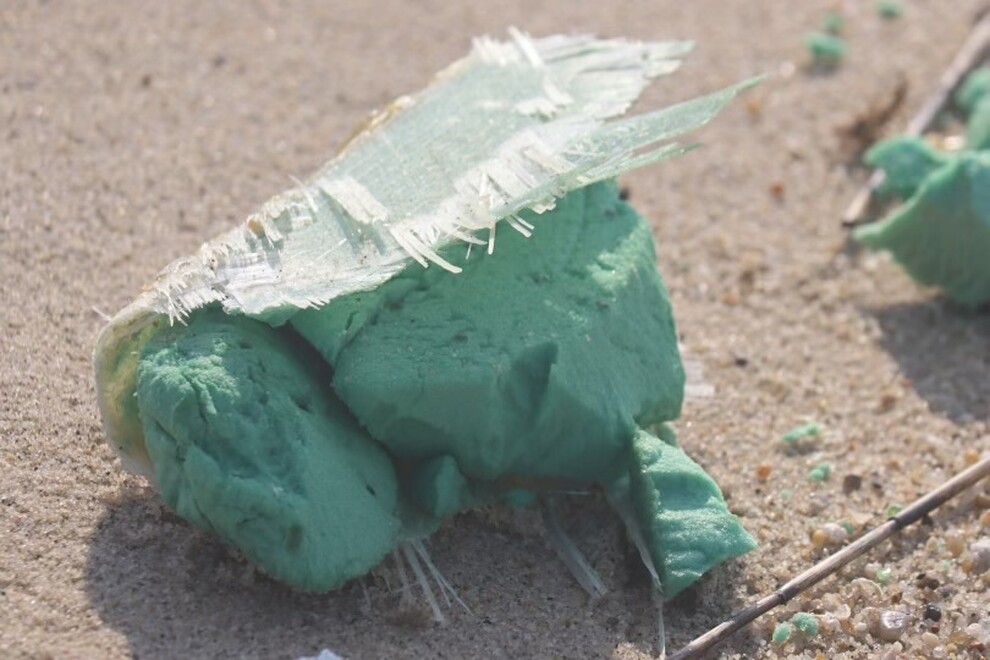New Hampshire residents will understand when Nantucket resident Pat McEvoy says the Feds jammed green energy (offshore wind) down their throats and that “We were not represented in this process.” Development in the Gulf of Maine has been fast-tracked thanks to State Senator David “This will look good on my resume” Watters. Dead whales didn’t stop it. Public opposition didn’t stop it. The high cost of projects or the rising electricity rates they produce did not get in the way. Developers bailing on offshore projects up and down the Atlantic coast were no deterrent. Nor are piles of data on how NOT green it is. I wonder if Nantucket can get that job done.
In the heat of summer, beaches on the tiny island were closed after an offshore turbine blade failed, dropping foam and fiberglass into the sea, which continued to drift up onto shore. It has been over a month, and the problem persists.
You’ll be familiar with the story about how massive decommissioned blades cannot be recycled and must be landfilled. The greens have been disinterested, mainly because when they choose energy over the environment, it is good for us. It appears that some of the material floating up on the beaches of Nantucket is toxic and leaches from buried blades into the groundwater.
Thousands of 45-70m blades (weighing between 10 to 25 tonnes) are being ground up and mixed with concrete used in the bases of other turbines erected later or simply dumped in landfill. Which should worry locals: the plastics in the blades are highly toxic, and contain Bisphenol A, which is so dangerous to health that the European Union and Canada have banned it.
But, it’s not just the ticking time bomb created by the millions of wind turbine blades that will end up buried around the world, there’s also a more immediate threat posed by these things. As wind turbine blades erode during operation, the toxins within the epoxy compounds they shed are finding their way into the oceans and our drinking water.
The theory goes that blades shed bits of fiberglass and microplastics during operation and over time, poisoning the food chain with Bisphenol A, which is a component in the epoxy glass fiber that makes up the blades.”Quite small concentrations of Bisphenol A damage the fertility of humans and all organisms, and despite this fact, the quantity and use of this dangerous chemical increased quite significantly. One of the biggest problem areas is the huge increase in epoxy compounds in the turbine blades in wind turbines.”
When fiberglass epoxy and other plastic substances are broken down into microparticles, these particles act as a “protection” for the substances they contain so that they do not break down in the same way as the substances do in their natural pure chemical form in the environment. This means that these problem substances retain their potential for damage much longer.
The idea of microplastics in the biosphere, appearing in humans and animals, is a thing right now, so this is interesting and timely. Bits get in the ocean and end up in the food chain, which then ends up in us, which may explain an inconvenient truth. You can no longer have discussions about plastic in the ocean or in humans without considering that it may have gotten there as a result of having offshore wind “literally” jammed down our throats.
In the same way, the small particles that peel off from a turbine blade or from other sources will float around in the free water masses for a long time and can be perceived as food by zooplankton and other small organisms. Larger particles can also be eaten by larger crustaceans or fish. What is particularly disturbing is the fact that a lot of bisphenols and other toxins are released from the particles when they enter the intestinal system, which often has an acidic environment with low PH. They are also released with increasing temperatures and go up in the food chains where they are concentrated more and more. In the end, a lot of the toxins we release will end up on our own dinner table and drinking water. This is the “Trojan horse effect”.
The EU is working on stricter regulations while people on Nantucket are still beachless (at least some of them) and increasingly unimpressed by what’s happened. And Island of mostly woke wealthy liberals confronted with the reality of their environmental activism. I wonder if someone will show up at the next town meeting in a suit made of wind turbine debris, microplastics, and fiberglass epoxy bits? And when they’re done there, can they go visit Sen. Watters?
GraniteGrok.com is a reader-supported endeavor, and we can’t continue without your support. Please consider a monthly subscription donation. It goes a long way to helping offset the rising cost of everything. One-time donations are also always welcome. If you would like to donate by check, email me at steve@granitegrok.com.
